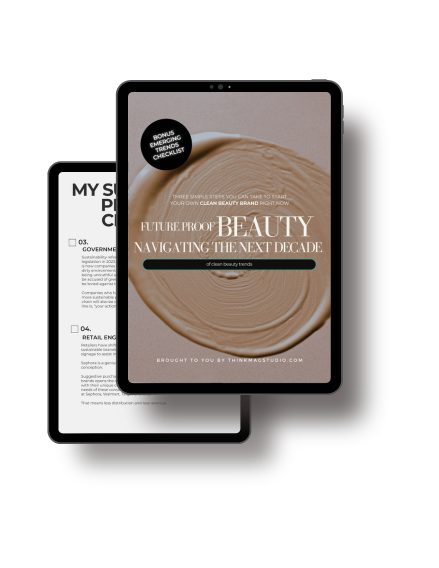In 2020 the sustainable beauty market was valued at US5439.6 Million. Its expected revenue by 2027 is predicted to be US11558.5 Million.
An increasing demand for beauty products with more cautiousness and awareness, as well as a surge in launching more sophisticated and clean beauty products for better skin care are some important factors driving the growth of the clean beauty market today.
But what is Sustainable Beauty anyway?
First off there is no such thing as Clean Beauty. All products have stabilizers and preservatives that help to prolong the freshness of the product.
With Clean Beauty products they are void of non-toxic chemicals such as parabens, phthalates, sulfates, and synthetic fragrances.
But since the arrival of Sustainable Beauty it has brought forth sub-categories such as Vegan and Cruelty-Free. All three take a holistic and gentler approach to personal skincare and beauty.
Consumers are making purchases based on their morals and values. They will invest in brands that align with their lifestyles and beliefs.
Choosing products with organic ingredients and have an environmental low-impact is now a brand must have. Being responsible is at the forefront whether consumers can keep up or not, they are and have become far more educated and are discerning in their choices.
89% of shoppers stay loyal to brands that share their values. Offering responsible packaging that’s either compostable, recyclable or refill incentives are important to the consumer.
Sustainable Beauty has attracted consumers whose personal well-being and environmental duty are equally considered.
Here are five emerging trends driving sustainable beauty brands in 2023;
1. Free From Claims
Growing in popularity these statements are being seen on food and beauty products to inform the consumer of any possible life threatening allergies.
Things like ‘nut free’ in food. Similarly ‘paraben-free’ is now a label seen on beauty products stating none of the paraben family exists in this product.
Parabens are a common ingredient used throughout the world. Known as hormone disruptors the Danish government brought forth an argument to ban parabens used in large amounts in Europe.
Today some are still being used in the US and Canada although not all are accepted.
2. Consumer Driven
“69% of consumers said over the last two years sustainability has become important to their well-being. Even if they cannot afford to buy sustainably, it’s something they keep informed about.”
– thinkmagstudio
If you haven’t realised it, this is a consumer driven economy and has been since the beginning of the 21st century. Social media has made the consumer incredibly educated on what they don’t want, and what they do want.
Brands like Lush, The Body Shop, Jo Malone, Drunken Elephant and Tata Harper are happily attracting this ideal consumer that wants ‘responsibility’ as a pre-installed requisite to purchase.
Adopting environmental practices that reflect a brand’s vision and values is a reality your competition will embrace fully.
69% of consumers said over the last two years sustainability has become important to their well-being. Even if they cannot afford to buy sustainably, it’s something they keep informed about.
3. Government Involvement
Sustainability reform and requirements are at every legislation in 2023. The most important drivers this year is how companies will be held accountable for their dirty environmental deeds.
Companies who plan on being untruthful about their sustainable practices will be accused of green-washing and therefore a fine may be levied against them in the future.
Companies who haven’t fulfilled their obligations of more sustainable packaging and a competent supply chain will also be dealt with via legislation. The bottom line is, “your actions speak louder than your words.”

4. Retail Engagement
Retailers have shifted to help consumers identify sustainable brands by offering breadcrumbs by way of signage to assist in making purchasing easier.
Sephora is a genius at this and has been since its conception.
Suggestive purchasing highlighting sustainable beauty brands opens the door for more small batch brands to align with their unique consumer.
Brands that do not meet the needs of these consumers will see their shelf space diminish at Sephora, Walmart, Target and Ulta.
That means less distribution and less revenue.
5. Sustainable Packaging
Some sustainable beauty brands have already taken steps to offer responsible ‘end of life packaging’ as consumers seek to make a minimal impact.
Refillable, compostable and biodegradable packaging are just a few emerging trends for sustainable beauty brands in 2023. Expect to see an increase in plant-based and bio-based plastics in the marketplace.
Brands that offer Refillable products and reusable packaging support the less waste model by less manufacturing and distribution.
Minimal packaging is an important part of sustainable beauty. We’re moving to more gentle less in your face model of branding.
Epilogue
Your business must follow these guidelines in order to gain authority and trust in the marketplace. Your brand not only has to show up professionally in all ways, it must follow government guidelines that will become necessary.
If you’re looking for more affordable branding than custom one of a kind brand. I have some brand kits available here.


